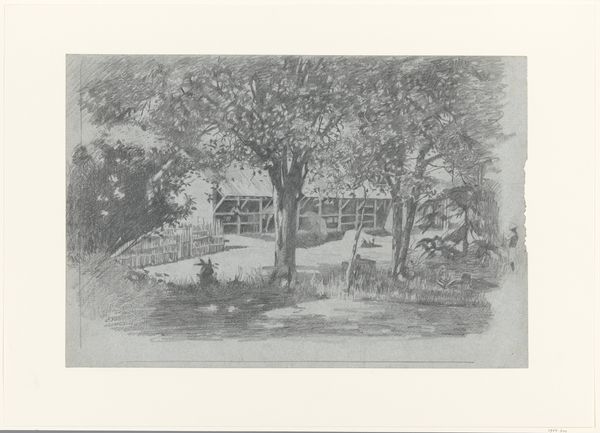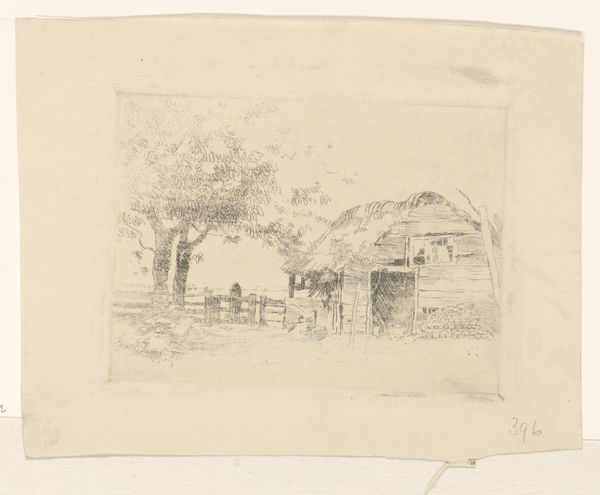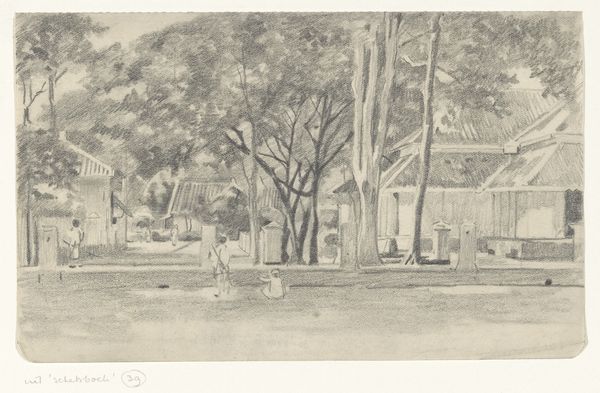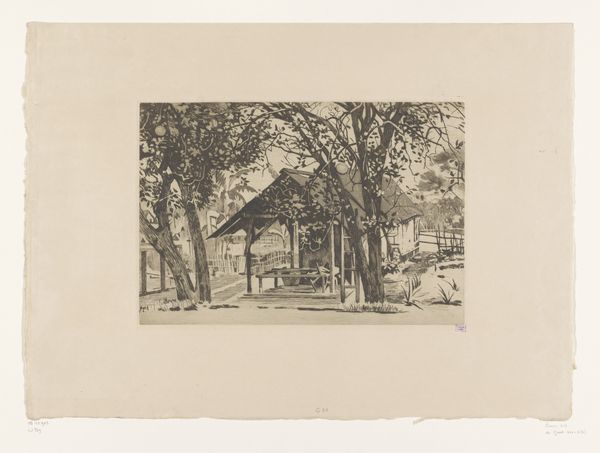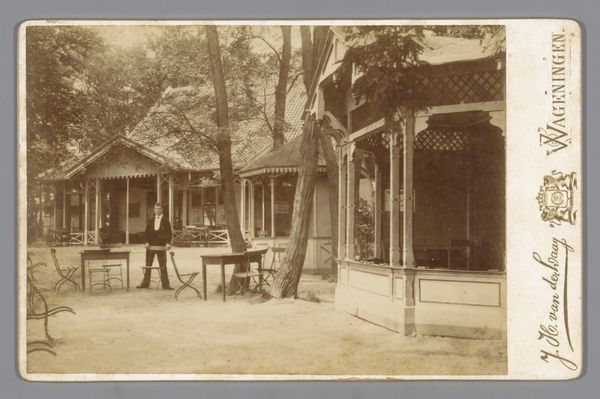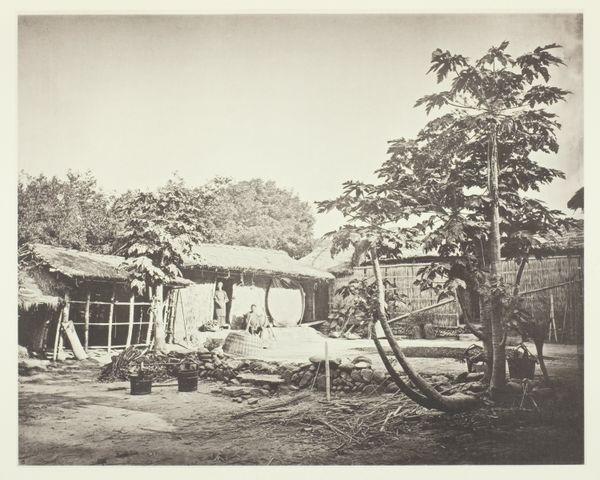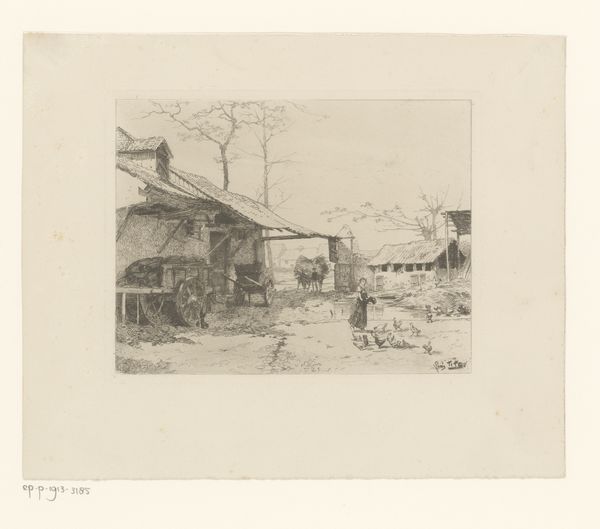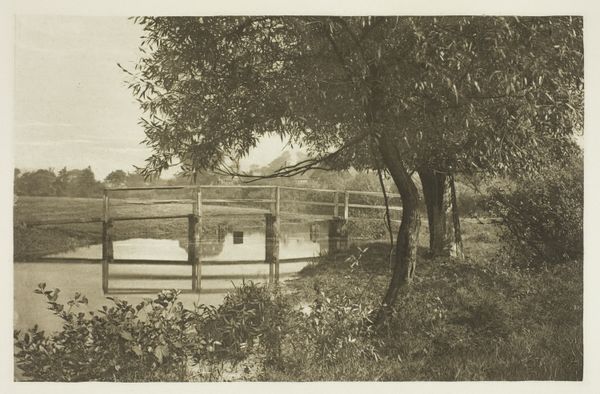
drawing, paper, pencil
#
drawing
#
landscape
#
paper
#
pencil
#
realism
Dimensions: height 295 mm, width 437 mm
Copyright: Rijks Museum: Open Domain
Editor: This drawing, "Bijgebouw op de plantage Gambar te Java" – or "Outbuilding on the Gambar Plantation in Java" – is believed to be from sometime between 1920 and 1924. It's a pencil drawing on paper by Willem Witsen. The soft grayscale lends it a tranquil air, almost like a memory. What strikes you about the piece? Curator: I’m drawn to the composition, particularly the artist's strategic use of framing. Notice how the trees act as a natural proscenium arch, focusing our gaze on the outbuilding. The textural contrast is equally compelling; observe the detailed rendering of the leaves versus the smoother planes of the architecture. It creates a visual push and pull. Editor: It definitely guides the eye, like you said. The detail is so meticulous, yet it retains a sketch-like quality. Was this contrast common in his drawings? Curator: Precisely. The inherent tension within its formal elements makes this drawing visually dynamic. He is presenting not a mimetic representation but an interplay of lines and forms, provoking inquiry of meaning beyond surface resemblance. Consider the pencil strokes themselves – they create gradients of tone that offer form, depth, and atmospheric qualities within the landscape depicted. Editor: So, you are looking more at *how* he represents the scene than *what* he is trying to show. Curator: Yes, exactly. How he leads the viewer through the formal devices such as perspective, light, and even the selection of line and tone is how the subject becomes interesting. Editor: This has provided me a deeper awareness of looking closely. It’s like learning a language just beneath the surface. Curator: Indeed. The value lies not just in recognition, but also in interpretation. Seeing the structures reveals the method that Witsen employed in making his vision visible.
Comments
No comments
Be the first to comment and join the conversation on the ultimate creative platform.
